“There was a very strong guilt”: Isabelle Maroger tells the story of her mother, born in a Nazi nursery
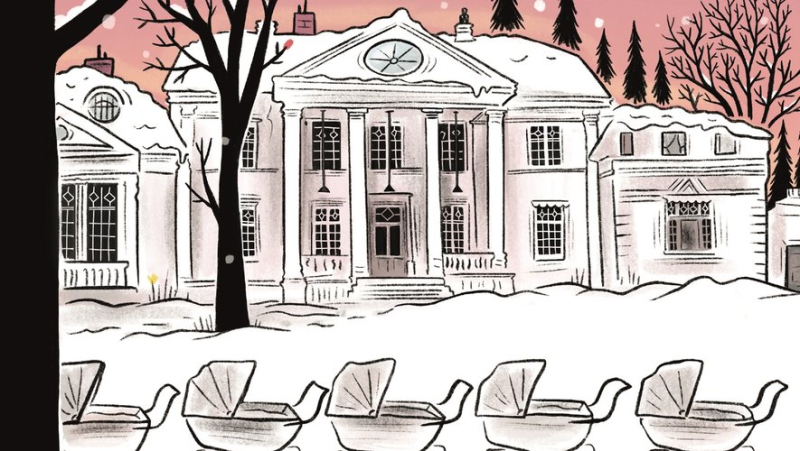
Around 20,000 children were born from the Nazi Lebensborn program, mainly in Germany and Norway. Bayard Graphic' – Isabelle Maroger
Born in Montpellier, raised in Nîmes, the author Isabelle Maroger signs with "Lebensborn" a graphic novel about its origins. Conceived in Norway in 1944, her mother, Katherine, was adopted at the age of 2 by a French couple. But she discovers that she is the daughter of a German soldier commissioned by the Nazis to give birth to Aryans. A story that is both intimate, historical and very moving, which also has its weight on the generation after.
The story that gives its title to the album is little known to the general public, that of Lebensborn, a Nazi program.
There have been documentaries, books, but the fact is that we talked about it during the Nuremberg trials, at the time, and that the page was quickly turned . Maybe because it’s a story of life and not death. Those of a few thousand babies and women, compared to the Shoah, which caused millions of victims.
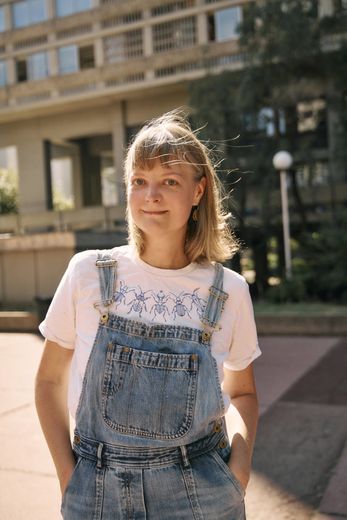
Isabelle Maroger grew up in Nîmes, her mother being a rheumatologist. She now lives in Lyon. Bayard Graphic'
Norway was at the center of this project to birth and select babies to populate the supposedly thousand-year-old Third Reich. Why ?
Hitler and Himmler considered it to be the cradle of the Aryan race, the place where the Aryans were the purest. The reason why it is in Norway and Germany that there have been the most Lebensborn – there was one in France, but for Hitler the Frenchman was a bastard and there were only around twenty births.
There was one in France, but for Hitler the Frenchman was a bastard and it was only about twenty births
In Norway, which was then a very small country, they had sent many soldiers. Every second man was a German sent for this, my grandfather was one of them. They organized a lot of balls, made sure that meetings happened naturally – I also think that there were rapes, children kidnapped.
How many children were born from relationships between German soldiers and young Norwegian girls ?
The figures differ greatly depending on the sources. We are talking about 15,000 to 20,000 babies in total, 10,000 to 12,000 in Norway.

Some of these babies were sent to Germany, others killed because they fell outside the Nazi criteria. What happened to the others?
Many have not done any research and are still unaware of the conditions of their birth. When I went there, I was told that I was the first of my generation to come there. In Norway, many had terrible fates, they were considered outcasts, locked up in institutes, lost their minds (Editor's note, the state apologized to them in 2018).
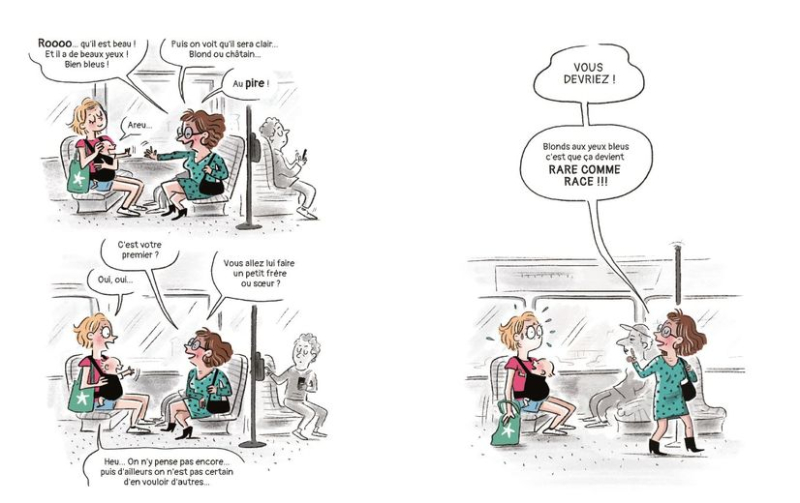
“Blonds with blue eyes, that’s how rare a race it is becoming!!!”, Isabelle Maroger was told one day on a bus. This will be the trigger for his work. Bayard Graphic' – Isabelle Maroger
Adopted by the French, your mother, Katherine, who knows she was born in Norway, decided around the age of 45 to carry out her research. What triggered them??
Throughout my childhood, when my brother, sister and I were very questioning, she said she didn't want to know. And then we all left at the same time and his adoptive mother died. I believe that she did not want to hurt him, because she had been her real mother for her, and that when her adoptive parents died she felt free to do so. TO DO. Then, with the internet, by entering her date and place of birth, she realized that there was no maternity ward where she was born…hellip;
She will thus find the identity of her mother, discover that she has a brother, a sister, an aunt, with whom the encounter is overwhelming, for her, but also your reader…
I cheated a little in the album, by merging her two aunts into one character, for the fluidity of the story. To have just one person tell everything, when in reality we got the information in dribs and drabs. I was still learning about it last summer. They weren't very talkative; my grandmother's suicide, for example, was very hard for them to say.
Actually, your grandmother is not the only one who got pregnant by a German soldier, her older sister too.
Yes, but when my mother arrived in Norway, Ethell was in palliative care, she died within a month. It was Carrie, the youngest sister, who told the most.
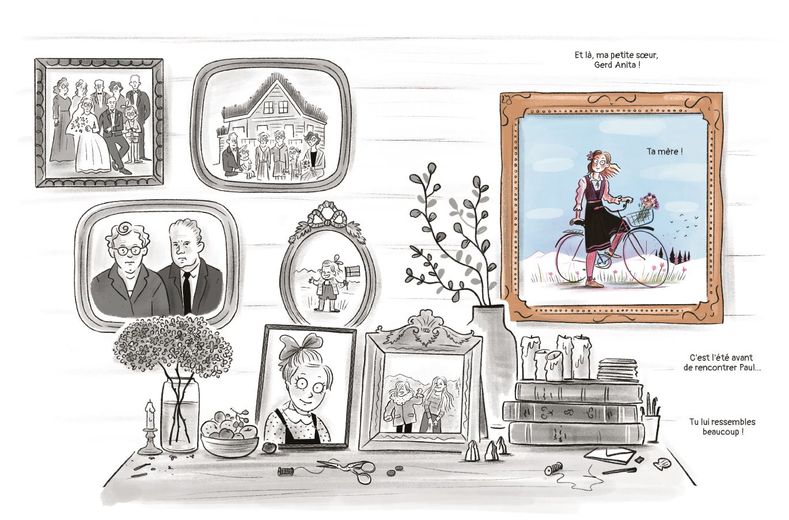
On the wall of Carrie, one of Isabelle Maroger's great-aunts, family portraits, that of Gerda, her grandmother. Bayard Graphic' – Isabelle Maroger
This story then also becomes yours and you write about it: "I thought I was in the winning camp"  ;and you talk about your "shame"…
Yes. It was a bit as if the Nazi blood in our veins had wiped out the resistance side of my family. My father's family, whose aunt is very well known as a resistance fighter in Montpellier, Simone Demangel, and the father of my Norwegian grandmother. That two of his daughters became pregnant by German soldiers was… hellip; There was a very strong guilt, which my mother also felt, as if I was carrying the weight of belonging to this Nazi camp.
It was a bit like the Nazi blood in our veins had wiped out the resistance side of my family
Is this why you wrote this graphic novel, even though your mother had already told this in a book ?
It’s my story, my identity, I’ve always grown up with it. I wanted to tell it through my prism, how the next generation is also impacted by this story. I feel like I'm carrying my mother's tears; I was a hypersensitive child, my mother doesn't cry, she is very strong. All the tears in the comic are mine, by the way.
Between your great-grandmother, who comes to take her daughter from Lebensborn, your great-aunt, your mother, it's a story of strong women that you tell.
It’s a women’s story, yes. And my brother, for whom the shame is strong, has turned the page. But you know, for my grandmother being pregnant was a tragedy, she was 17 years old, she was not one of those who wanted to give the Führer a child and she would have aborted if she could. So this book also talks about these women's questions, that of choice, that of their body.
For my grandmother, being pregnant was a tragedy, she was 17 years old, she was not one of those who wanted to give the Führer a child
The relationship with the Norwegian family was immediately close, as if it were natural…
My mother is the photocopy of my grandmother; When her brother saw her, he had the impression of seeing her get out of the plane. And for my aunt, it was a key to understanding her complicated relationship with her mother, whom she had always thought did not love her. After abandoning my mother at the age of 2, she probably had a lot of difficulty loving this second daughter.
It’s quite the opposite with the German side, which you then discover.
It’was very cold, my grandfather didn't want to talk about the subject, it’was "you wanted see me, you saw me". My mother pushed him a lot, he broke down when he learned that my grandmother had committed suicide, in big sobs, but he didn't say anything more.
You will never know if he loved your grandmother or just carried out his mission?
I think he loved her, but that's the story I want to tell myself, I want to ;rsquo;believe it.
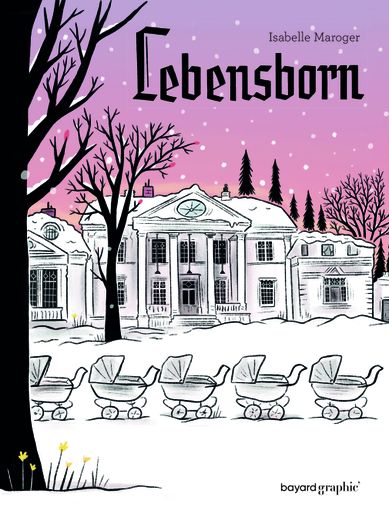
“Lebensborn”, at Bayard Graphic' Bayard Graphic' – Isabelle Maroger
"Lebensborn", by Isabelle Maroger, editions Bayard Graphic', 224 tracks, 22 euros.
I subscribe to read more




